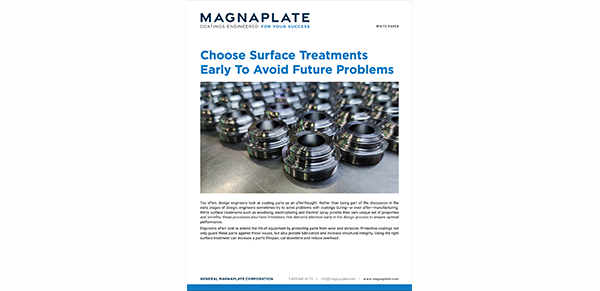
Coatings Technology Blog
Eliminate Design Problems With The Right Base Metal Choice

Communicating early with your coating vendor to discuss base metal choices can limit issues later in the design process—especially if your part has tight tolerances. Deformation can occur if application surface loads are high, and coating process or post-process temperatures can often exceed the substrate heat treatment’s recommended operating temperatures. In addition to deformation, some metals suffer from structural stability issues where the part moves or changes size.
Avoid hydrogen embrittlement. When considering high strength alloys or other materials such as titanium or tool steels, part designers should be aware of hydrogen embrittlement that can cause parts to crack and fail under loads. During the cleaning process—which often involves acidic materials—some alloys impart hydrogen to the surface of the metal, causing embrittlement. If the coating vendor knows this, they can perform specialized procedures to the part after coating, or use alternative cleaning processes to expel the hydrogen from the surface to avoid the issue.
Engineers sometimes design a part that incorporates more than one material. In this case, the part may not be conducive to plating surface treatments because the cleaning methods before coating differ with each type of metal. For example, one cleaning process can activate the surface of a given metal for coating, while passivating the surface of the second material.
Adhesion issues. If you can’t coat both surfaces at the same time, you’ll need special masking, which will drive up the cost due to its labor intensive nature. Adhesion issues on the boundary areas between the two metals also occur, and there may be a galvanic reaction between the two materials when you expose them to electrolytes. This can create corrosion of one of the base materials.
In addition, if the base metal of the part is hard, it can cause surface tensions that prevent a strong adhesion between the base material and coating. A bad bond between the part and coating will lead to chipping of the coating. Keeping coatings thin and paying special attention to surface preparation can help avoid this problem.